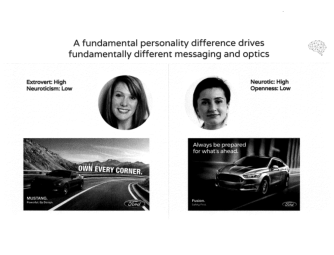Cambridge Analytica used misleading presentations in meetings with potential clients

After the surprise victory of Donald Trump in the 2016 presidential election, stories began circulating about how a relatively obscure data analytics firm called Cambridge Analytica had helped the campaign win by using an innovative blend of digital microtargeting and psychological tactics to appeal to voters.
It was good publicity for the data firm. One Cambridge director likened the amount of client interest they were receiving to “drinking from a fire hose.”
Then scandal hit the firm in March 2018. A former Cambridge Analytica employee named Christopher Wylie has in recent weeks provided details about the inner workings of the firm, including how it collected data from potentially more than 50 million Facebook users. On March 19, Channel 4 released hidden camera footage of now-suspended Cambridge Analytica CEO discussing how his firm can use ex-spies to dig up dirt on political opponents, swing elections in foreign countries, and use “fake news” to change public opinion.
Now, an article published on Friday by Mother Jones shows how the data firm positioned itself in pitch meetings with potential clients following the election of Donald Trump. As Mother Jones’ Andy Kroll wrote, it’s pretty misleading.
In a presentation entitled “Data-driven behavior change,” the firm positions itself as one that “put Donald Trump in the White House,” and explains how it uses personal user data and psychological research to tailor messaging to individual consumers or voters. The firm’s psychographic approach takes information collected from individuals’ social media profiles—magazine subscriptions, religious affiliation, hobbies—and uses it to estimate where users rank according to the Big Five personality traits: openness, extraversion, neuroticism, conscientiousness, agreeableness.

The firm would then be able, the idea goes, to estimate which kind of messaging would be most effective for certain individuals – even ones that seem remarkably similar on paper.

In the presentation, the firm provides some A/B examples from ad campaigns for major clients like Ford, American Express, and Coca-Cola.

“The implication and the inferences are that [Cambridge Analytica] did this work,” Bill Wilson, president of the Market Research Foundation, a conservative data analytics organization, toldMother Jones.
But Cambridge Analytica was never hired by Ford, American Express, or Coca-Cola. A Democratic digital strategist toldMother Jones:
“When a vendor shows us their marketing materials with sample work for big brand names, the expectation is that those examples are projects they have actually worked on—not theoretical work.”
A spokesman for Cambridge Analytica said in a statement: “These were illustrations or mock-ups of how the Cambridge Analytica approach could potentially work for brands, and were used in pitch meetings to help visualize our services. We do not claim that we have worked for these particular brands and we always make it very clear that these are not case studies. Any suggestion that Cambridge Analytica has claimed to work for these brands is false.”

Former Cambridge Analytica CEO Alexander Nix. (Photo: Bryan Bedder/Getty)
Cambridge Analytica seems to have a history of not being completely honest about its capabilities. In 2015, the firm told the Ted Cruz campaign it would use an innovative microtargeting software called Ripon to help the Republic team gain an edge over competitors. But that software didn’t exist at the time.
“It’ll never exist,” a Cambridge consultant told several Cruz staffers after repeatedly telling them the software was almost ready. “I’ve just resigned because I can’t stand lying to you every day anymore.”
The firm also reportedly lied when it provided Facebook with certifications claiming it had deleted massive amounts of Facebook user data in 2015. That Facebook didn’t do more to ensure Cambridge Analytica had deleted the data is a key point in the current scandal involving the social media platform.





